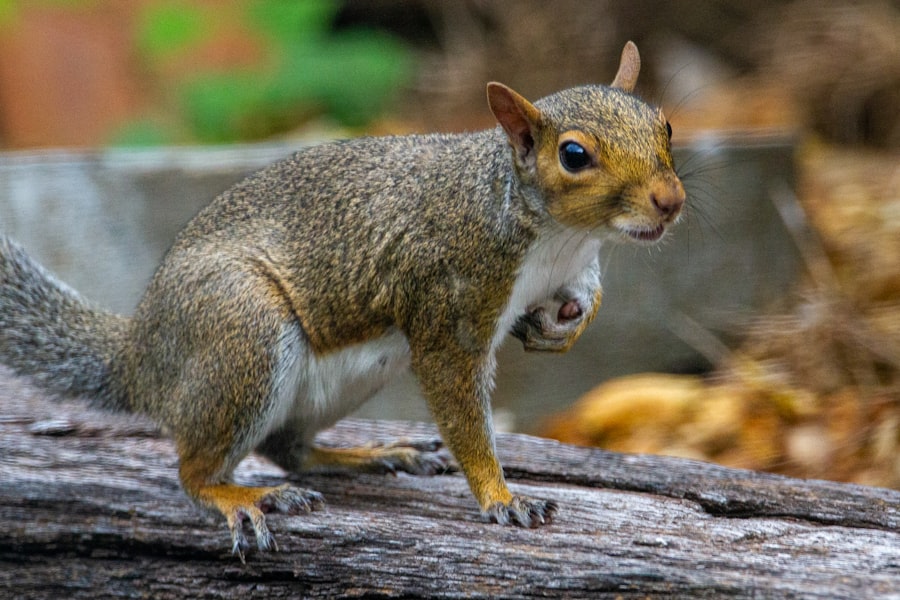When selecting a dog breed for your home, several factors should be considered. The size of the dog is crucial, as it must be compatible with your living space. Large breeds may not be suitable for small apartments, while they can thrive in homes with spacious yards or rural settings.
The energy level of the breed is another important consideration. Some dogs require extensive exercise, while others are content with less physical activity. Matching the breed’s energy level to your lifestyle is essential for a harmonious relationship.
The temperament and personality traits of different breeds should also be taken into account. Breeds vary in their sociability, independence, and overall demeanor. It is important to select a breed that aligns with your own personality and lifestyle preferences.
Additionally, consider any specific requirements you may have, such as allergies or sensitivities to pet dander. Some breeds are hypoallergenic and shed less, making them more suitable for individuals with allergies. Thorough research on various breeds is crucial before making a decision.
Evaluate your living situation, personal preferences, and any specific needs you may have. By carefully considering these factors, you can choose a breed that will integrate well into your home and lifestyle, leading to a successful and fulfilling relationship with your new pet.
Table of Contents
- 1 Providing Adequate Space
- 2 Creating a Safe and Secure Environment
- 3 Ensuring Proper Nutrition
- 4 Providing Enrichment and Entertainment
- 5 Maintaining Cleanliness and Hygiene
- 6 Monitoring Health and Well-being
- 7 FAQs
- 7.1 What are some tips for keeping chickens happy in town?
- 7.2 How can I ensure my chickens are comfortable in a town environment?
- 7.3 What are some common challenges of keeping chickens in a town setting?
- 7.4 What are some ways to provide enrichment for urban chickens?
- 7.5 Are there any specific breeds of chickens that are well-suited for urban living?
Key Takeaways
- Research and choose a breed that fits your lifestyle and living situation
- Ensure your pet has enough space to move around and exercise
- Create a safe environment by pet-proofing your home and yard
- Provide a balanced diet and access to clean water at all times
- Keep your pet mentally stimulated with toys, puzzles, and interactive activities
- Regularly clean and sanitize your pet’s living area to prevent illness and odor
- Monitor your pet’s health and behavior for any signs of distress or illness
Providing Adequate Space
Accommodating Your Dog’s Needs
Dogs, like humans, need space to move around and exercise to stay healthy and happy. If you live in a small apartment or have limited outdoor space, it’s essential to find ways to provide your dog with opportunities for physical activity. This may include taking your dog for regular walks, visiting a nearby dog park, or finding other creative ways to keep them active indoors.
Creating a Comfortable Environment
Consider creating a designated area in your home where your dog can have their own space to relax and unwind. This could be a cozy bed or crate where they can retreat when they need some alone time.
Ensuring a Safe Outdoor Space
If you have a larger living space or a yard, it’s crucial to ensure that it is safe and secure for your dog to roam and play. This may involve installing a fence around your yard to prevent your dog from wandering off or getting into potentially dangerous situations. It’s also important to remove any hazards or toxic plants from your yard that could pose a threat to your pet.
By providing adequate space for your dog to move around and play, you can help them stay physically and mentally stimulated, which is essential for their overall well-being.
Creating a Safe and Secure Environment

Creating a safe and secure environment for your dog is essential for their well-being. This includes securing any potential hazards in your home, such as electrical cords, toxic plants, or small objects that could be swallowed. It’s also important to ensure that any chemicals or cleaning products are stored out of reach of your pet to prevent accidental ingestion.
Additionally, consider investing in baby gates or other barriers to restrict access to certain areas of your home where your dog may not be allowed. If you have a yard or outdoor space, it’s important to ensure that it is secure and escape-proof to prevent your dog from wandering off or getting into dangerous situations. This may involve installing a fence around your yard or using a tie-out or leash when your dog is outside.
It’s also important to provide adequate shelter from the elements, such as a dog house or shaded area where your pet can seek refuge from the sun or inclement weather. In addition to creating a safe environment in your home and yard, it’s important to consider the safety of your dog when traveling in a car or going for walks. Invest in a secure harness or crate for your dog when traveling in a vehicle, and always use a leash when walking your dog in public areas.
By taking these precautions and creating a safe and secure environment for your pet, you can help prevent accidents and keep them out of harm’s way.
Ensuring Proper Nutrition
Proper nutrition is essential for the health and well-being of your dog. It’s important to provide a balanced diet that meets their specific nutritional needs based on their age, size, and activity level. When choosing a food for your dog, look for high-quality options that contain real meat as the first ingredient and are free from artificial additives and fillers.
Consider consulting with a veterinarian or animal nutritionist to determine the best diet for your pet based on their individual needs. In addition to providing high-quality food, it’s important to monitor portion sizes and avoid overfeeding your dog, which can lead to obesity and other health issues. Follow the feeding guidelines provided on the food packaging and adjust portion sizes based on your dog’s activity level and body condition.
It’s also important to provide access to fresh water at all times to keep your dog properly hydrated. In addition to their regular diet, consider incorporating healthy treats into your dog’s routine as a reward for good behavior or training purposes. Look for treats that are made with natural ingredients and avoid those that are high in fat, sugar, or artificial additives.
By ensuring proper nutrition for your dog, you can help them maintain a healthy weight and overall well-being.
Providing Enrichment and Entertainment
Dogs thrive on mental stimulation and physical activity, so it’s important to provide enrichment and entertainment to keep them engaged and happy. This may include providing interactive toys that challenge your dog’s problem-solving skills or engaging in activities such as fetch, tug-of-war, or agility training. Consider rotating toys regularly to keep things interesting for your pet and prevent boredom.
In addition to physical activities, it’s important to provide opportunities for socialization with other dogs and people. This may involve regular visits to the dog park or setting up playdates with other friendly dogs in your neighborhood. Socialization is important for dogs to learn appropriate behavior and develop good manners around other animals and people.
Consider incorporating mental enrichment activities into your dog’s routine, such as puzzle toys or scent games that encourage them to use their natural instincts and abilities. Training sessions can also provide mental stimulation for your dog while strengthening the bond between you and your pet. By providing enrichment and entertainment for your dog, you can help prevent behavioral issues such as excessive barking or destructive chewing while promoting their overall well-being.
Maintaining Cleanliness and Hygiene

Grooming Needs
Some dogs may require daily brushing, while others may only need occasional grooming. In addition to grooming, it’s important to keep your dog’s ears clean and free from wax buildup or debris that could lead to infections. Use a gentle ear cleaner recommended by your veterinarian and avoid inserting anything into your dog’s ear canal that could cause damage.
Dental Care
Regular dental care is also important for maintaining cleanliness and hygiene in dogs. This may include brushing your dog’s teeth regularly with a pet-safe toothpaste or providing dental chews or toys that help reduce plaque and tartar buildup.
Living Environment
Finally, it’s important to keep your dog’s living environment clean by regularly washing their bedding, toys, and food dishes. Use pet-safe cleaning products to disinfect surfaces and remove any odors that could attract pests or bacteria. By maintaining cleanliness and hygiene for your dog, you can help prevent skin issues, infections, and other health problems while keeping them comfortable and happy in their environment.
Monitoring Health and Well-being
Monitoring the health and well-being of your dog is essential for early detection of any potential issues or concerns. Schedule regular wellness exams with a veterinarian to ensure that your pet is up-to-date on vaccinations and preventative care such as flea and tick control. Be proactive in monitoring changes in your dog’s behavior or appetite, as these can be early indicators of health problems.
Keep an eye out for any signs of discomfort or pain, such as limping or reluctance to move around. Regular exercise is also important for maintaining the overall health and well-being of your dog. Ensure that they are getting enough physical activity each day to prevent obesity and promote cardiovascular health.
In addition to physical health, it’s important to consider the mental well-being of your dog. Provide opportunities for socialization with other dogs and people, as well as mental enrichment activities that challenge their problem-solving skills. By monitoring the health and well-being of your dog on a regular basis, you can catch any potential issues early on and provide prompt medical attention when needed, ultimately ensuring a long and happy life for your beloved pet.
In conclusion, providing a safe, secure, and enriching environment for your dog is essential for their overall well-being. By choosing the right breed for your home, providing adequate space, ensuring proper nutrition, offering enrichment and entertainment, maintaining cleanliness and hygiene, and monitoring health and well-being, you can set yourself up for a successful relationship with your pet while promoting their happiness and longevity.
If you’re looking for tips on how to keep your urban chickens happy, you might want to check out this article on the Snaplock Chicken Coop. This article provides valuable information on how to create a comfortable and secure living space for your chickens in an urban environment. It’s important to ensure that your chickens have a safe and cozy coop, and this article offers some great insights on how to achieve that.
FAQs
What are some tips for keeping chickens happy in town?
Some tips for keeping chickens happy in town include providing them with a spacious and secure coop, ensuring they have access to fresh water and a balanced diet, and providing them with opportunities for exercise and mental stimulation.
How can I ensure my chickens are comfortable in a town environment?
To ensure your chickens are comfortable in a town environment, it’s important to provide them with a clean and well-ventilated coop, protect them from predators, and minimize noise and other disturbances that may cause stress.
What are some common challenges of keeping chickens in a town setting?
Some common challenges of keeping chickens in a town setting include noise complaints from neighbors, limited space for the chickens to roam, and potential zoning restrictions or regulations related to keeping poultry.
What are some ways to provide enrichment for urban chickens?
Ways to provide enrichment for urban chickens include providing them with opportunities to dust bathe, offering them a variety of perches and roosts, and providing them with access to fresh grass or other vegetation for pecking and foraging.
Are there any specific breeds of chickens that are well-suited for urban living?
Some specific breeds of chickens that are well-suited for urban living include bantam breeds, such as Silkies or Polish chickens, which are smaller in size and generally quieter than larger breeds.
Meet Walter, the feathered-friend fanatic of Florida! Nestled in the sunshine state, Walter struts through life with his feathered companions, clucking his way to happiness. With a coop that’s fancier than a five-star hotel, he’s the Don Juan of the chicken world. When he’s not teaching his hens to do the cha-cha, you’ll find him in a heated debate with his prized rooster, Sir Clucks-a-Lot. Walter’s poultry passion is no yolk; he’s the sunny-side-up guy you never knew you needed in your flock of friends!








